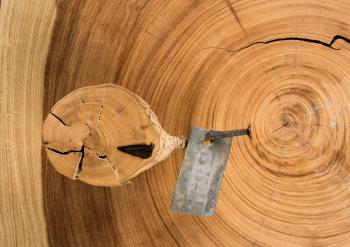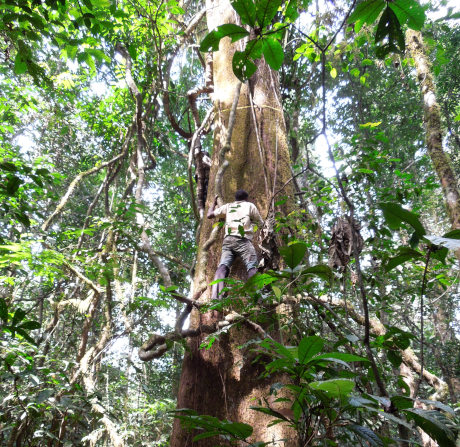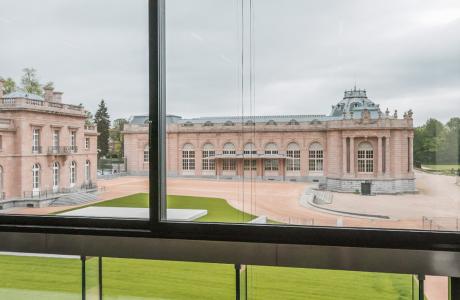A small tree is not always a young tree
Forest giants have long been considered the oldest trees in tropical forests. Research now shows that small trees can also be very old, and can even grow older than the big ones. Scientists associated with the RMCA published this novel finding in the leading journal Nature Plants. The discovery that small trees can live longer, and therefore hold on to longer-term carbon, has important consequences for forest policy in the tropics.

Keeping up appearances: the small tree with a diameter of only 7 cm is no less than 329 years old, more than 100 years older than the big tree. (c) RMCA, photo Jo Van de Vyver
Scientists from the RMCA, Ghent University, the Congolese Institute for Agricultural Research and an international consortium of research institutions made the surprising conclusion that some small trees in the Luki reserve, in the southwest of Congo, are much older than they look. They hardly appear to grow and almost stand still in time. ‘We found that a tree with a diameter of 10 cm can easily be 300 years old, while trees ten times larger may be half the age’, forest ecologist Bhély Angoboy Ilondea of the RMCA explains.
 With treasure map and metal detector
With treasure map and metal detector
To study the growth rate of the trees, the scientists measured growth ring widths on wood samples taken with a hollow drill. A unique aspect is that the growth speed of the trees could be measured with great precision, thanks to the metal identification tags that colonial scientists attached to some 6,000 trees in the reserve 70 years ago. The scars that were left by the nails used for tagging, precisely indicate the year 1948. Until recently, the Luki research area had been 'forgotten'. Armed with a 'treasure map' from the colonial period and with a metal detector, the RMCA research team tracked the tags and nails that sometimes grew up to 20 cm deep in the wood.
It became clear that many small trees grow at an extremely slow pace, and that they can therefore reach a very high age. The unique data from the Congolese rainforest were compared with 'classic' growth measurements (diameter measurements) from the African Tropical Rainforest Observation Network (led by the University of Leeds) of tens of thousands of trees from across 4 Central African countries. This confirmed the new insights in how trees grow and how old they grow.
May they live for evermore
Tropical forests are essential to regulate the climate by storing excess CO2 from the atmosphere. They contain half of the biomass carbon on earth. The new knowledge about the age of small trees in tropical forests matters for tropical forest policy aimed at carbon storage.
‘Our work shows that both the large and the small trees contribute to ensure carbon is locked up’, Bhély says. Small trees contain little carbon, but they live long and are very numerous. Large trees are rarer and have faster life-cycles, but each contains more carbon. ‘This is an important reminder to scientists and managers to focus on longevity as well as size. One tends to see only the big trees in the forest, but appearances are deceptive.’
Scientific article: The persistence of carbon in the African forest understory, Nature Plants, Volume 5, Issue 2 (published online January 21st 2019) DOI: 10.1038/s41477-018-0316-5


